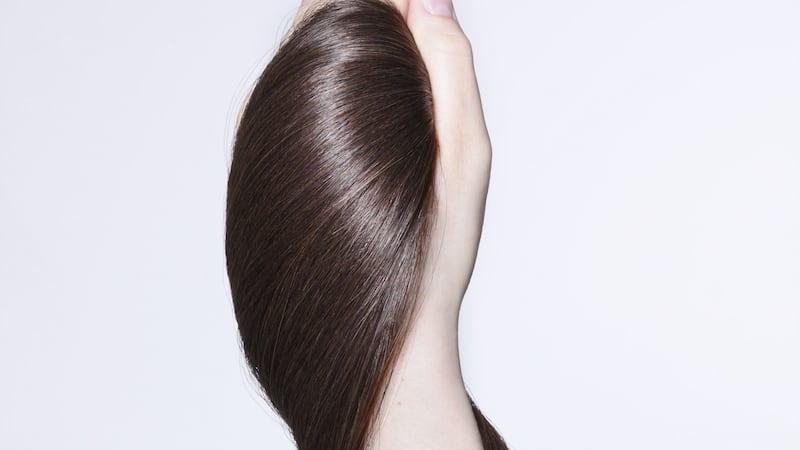I remember the arrival of Moroccanoil on Ireland’s beauty scene, as a product you could buy in salons on the recommendation of your hair stylist. It feels as though the brand has been around far longer than a decade, but it celebrates its 10th anniversary this year. Though some hair oils were available to buy here before Moroccanoil, they were mostly limited to at-home “hot oil” treatments or a minor ingredient in heavy, filmy frizz tamers.
Using oil as a treatment, maintenance and styling product is something that was historically much more mainstream and far better understood in the African and African American markets. Caucasian women – at least within Europe and the United States – generally showed reluctance to adopt oils as part of their hair and skincare routines; it was simply an unfamiliar practice in the context of our cultural norms. Moroccanoil seemed to enter the market all of a sudden, and changed that very quickly. In the decade since its appearance in salons (it is now stocked in over 100,000 salons around the world), oils have become the norm.
Starting as a small salon owner herself, the brand's co-founder, Carmen Tal, recognised the importance of the stylist-client relationship in selling products, but never considered how big her new brand might become.
“In the early years, I was solely focused on building the brand itself. We were extremely lucky to have this incredible and remarkably successful product, and we did not have the time to think of how small or large our brand would be. Worldwide success is just a bonus . . . and it’s been such an incredible journey evolving into a complete lifestyle beauty brand.
“Hairstylists were vital in launching our professional hair products and we would not be where we are today without the support of the hair stylists and salon community.”

It was through the encouragement of stylists that Irish women, among others around the world, first incorporated oil into their haircare routine.
Global stage
Though oils as beauty products were commonly used by African women, and argan oil was specifically appreciated and used by Moroccan women, Tal brought argan oil to the global stage after suffering a hair disaster on holiday and consequently trying an argan oil treatment at a small salon.
The story is one of those many brand origin tales which have settled into cliché within the beauty industry. The narrative of a brand’s genesis often goes something like this – someone discovers an ingredient hitherto unknown/ undiscovered/ untapped, observes its miraculous properties, and then builds a brand on the back of it. They bring that brand home and present the product unto us like Moses with his tablets. The Moroccanoil origin story is not much different, except that customers agreed that the resulting product was game changing and began buying it in astonishing numbers.
Unique
Argan oil is unique to Morocco, and is compressed from the kernels of the argan tree, often as a byproduct of argan nut production. Tal and her ex-husband, with whom she still closely works, bought a small company that imported argan oil from Morocco within a year of the hair treatment that inspired her to bring the oil to the US market.
They began importing to the US and global success followed shortly after. The treatment that righted Tal’s damaged hair became the signature Moroccanoil Treatment, the brown bottled product that is now so globally recognisable. Indeed, it helps that the products are masterfully packaged. Moroccanoil Blue is an official, custom Pantone colour, and is globally associated with the brand.
This is the sort of smart marketing and association that most brands aim and hire expensive advisers to achieve, but never actually do. The Moroccanoil fragrance is also completely unique and instantly recognisable.
Tal, who is now New York-based and still heads the brand down to the smallest details, found a winning ingredient, but had the business acumen and industry knowledge to develop it into the enormous success that it is now. The company did not expand so quickly and maintain its success through the innovative inclusion of argan oil alone.
New category
Rather than simply adding a new brand to a saturated beauty market, Moroccanoil created a new market category. According to Tal, "Since launching . . . in North America we have experienced tremendous success around the globe in over 68 countries where the brand is available. What began as a single, revolutionary product . . . pioneered a new category in the beauty industry. Today, we are a complete lifestyle beauty brand."
Moroccanoil made oil-based haircare mainstream on a global scale, and the company grew exponentially as the product’s popularity expanded along with the range of haircare, and the introduction of body and suncare, some of which is not yet available to buy in Europe.
Still, it is the original Moroccanoil treatment oil which remains the enduring symbol of the brand, and its bestselling product. Many hair oils have followed in its wake – almost every premium and pharmacy haircare brand carries an oil within their range – but the original remains the one that comes to mind and continues to carry an expanding beauty brand on its back.
Though some criticise the silicones within the formula, I take a far more pragmatic view of haircare. With a head of wild Irish hair to force into submission, like many of us, I will use what works. Silicones don’t work for everyone, but they do work for most of us and, thankfully, Moroccanoil has been subduing my hair for a decade.





















